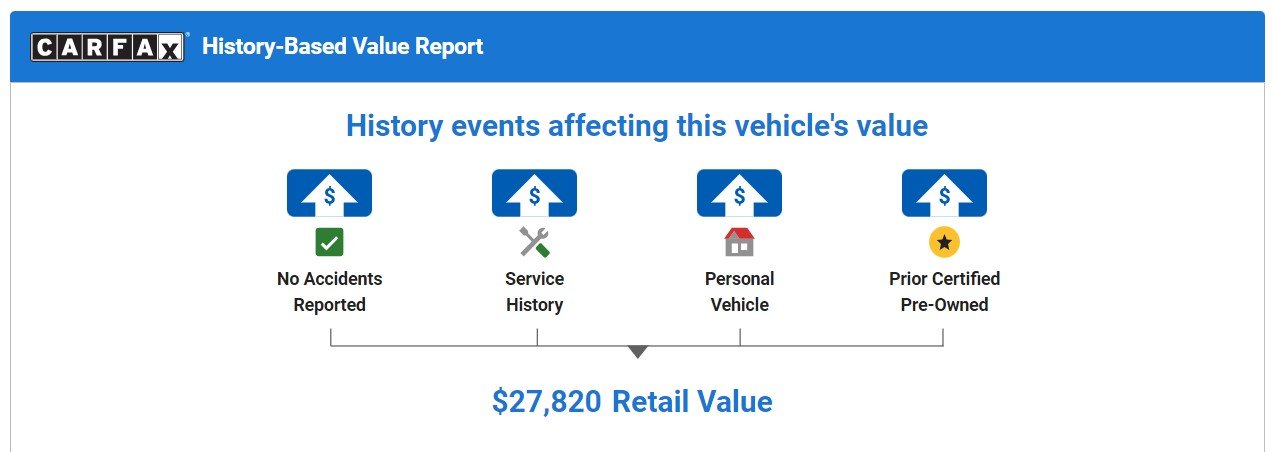Part 1 of a 3 Part Series: Buying and Selling Vehicles for the Enthusiast
What a CARFAX Report Doesn’t Tell You
Vehicle history reports.. what don’t they tell you?
In this first of this three part series, Buying and Selling Vehicles for the Enthusiast, Brent reviews the pros and cons of vehicle history reports like Carfax.
Vehicle history reports are valuable tools for gaining insight into a vehicle’s history, but they do not tell you everything. The information collected in these reports is pulling information from thousands of data points, with much of it likely coming from US motor vehicle agencies.
The biggest gap we see at Revive in these reports is vehicles having panels repainted that the customer was unaware of. This is not all that uncommon as dealerships are handling hundreds of vehicles annually and unfortunately things happen. It is not uncommon that even a brand-new vehicle has a panel repainted due to damage in transportation and handling.
A closer look at the Carfax website indicates that they look to be relying more on data from motor vehicle reports than they are from body shops:
Accident and damage indicators, such as airbag deployments
Different states report varying amounts of information after a crash, and older crashes often have less information.
Some states even require disclosure if the damage exceeds a certain dollar level.
Accident damage can most easily be determined by the paint; if a vehicle was in an accident, it likely had some repaint. Unfortunately, Carfax does not have robust data to identify this. Many body shops do not report to Carfax, and a significant amount of paint work is done directly on the premises of the dealership by mobile service providers. Having owned a business providing paintwork to dealerships in the past, I can assure you that this type of work is seldom reported to Carfax.
There is a solution though: Paint Depth Report.
Any quality detail shop can evaluate the paint on a vehicle and provide report showing the paint depth on most vehicles using a paint thickness gauge. Paint thickness gauges measure the amount of material (primer, paint and clearcoat) between the tip of the gauge and the substrate, typically steel or aluminum body panel of a vehicle. These reports are invaluable in determining if any paintwork has been done on a vehicle.
Common paint depths are typically around 5 mil (1 mill = 1/1000 of an inch). Knowing what to expect, and comparing it to the paint depth report will allow a professional detailer to offer insight into the paint on your vehicle.
You can see in this paint depth report on a 2016 Audi S5 that the hood has the expected measurements between 4.25 and 5.12 mils.
The left front fender is well outside of the norm with measurements between 7.01 and 20.98 mils. The assumption is that the passenger side has likely been repainted due to damage at the center of the fender (where the paint depth is thickest).
In the Carfax report though, there is no record of an accident or paintwork being done on this vehicle. This is where we can get into a bit of grey area. This repaint is not necessarily from a motor vehicle accident, it could simply be from a deep scratch.
While this is not a significant issue for most cars, for enthusiasts looking for all original vehicles, paintwork can devalue the long-term value of a vehicle.
If you are an auto enthusiast and considering a new (or new to you) vehicle, get the CARFAX Report, but get a paint evaluation as well!
Up next in our three part series Buying and Selling Vehicles for the Enthusiast:
Part Two: Vehicle Valuation Tools for Classic and Future Classic Vehicles
Brent Mathieson is the CEO and Founder of Revive Auto Detailing, a detail shop in seacoast New Hampshire that in less than 5 years has grown from a 1 man, mobile detailing business to one of the largest detail shops in the region.






